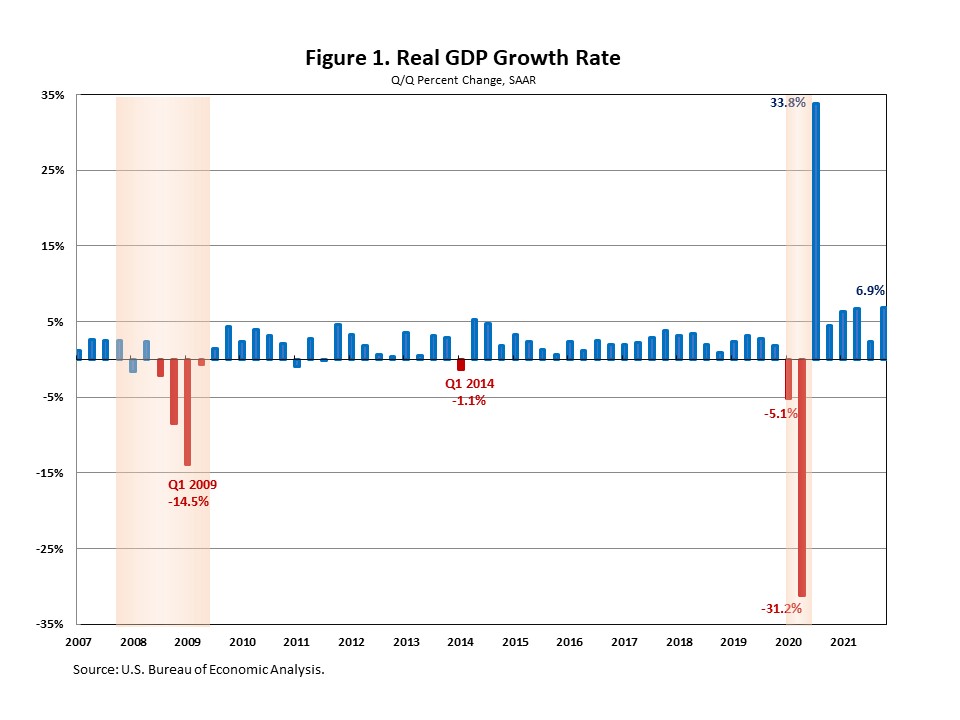Real GDP growth accelerated in the fourth quarter of 2021 despite omicron’s spread. This quarter’s growth reflected strong gains in private inventory investment and consumer spending.
According to the “advance” estimate released by the Bureau of Economic Analysis (BEA), real gross domestic product (GDP) increased at an annual rate of 6.9% in the fourth quarter of 2021, after a disappointing 2.3% increase in the third quarter of 2021. This quarter’s growth rate matched NAHB’s forecast.
For the full year of 2021, real GDP grew at a 5.7% annualized rate, also matching NAHB’s annual forecast. It marked the fastest growth rate since 1984. In 2020, the COVID-19 pandemic, and its associated policy response, plunged the U.S. economy into the worst contraction since 1946 as real GDP declined 3.4%.

The increase in real GDP in the fourth quarter of 2021 reflected increases in private inventory investment, exports, and personal consumption expenditures (PCE). Meanwhile, the increase in imports, which are a subtraction in the calculation of GDP, and decreases in both federal and state and local government spending had negative contributions to economic growth in the fourth quarter of 2021.
The acceleration in real GDP in the fourth quarter primarily reflected accelerations in exports, private inventory investment and consumer spending. The change in private inventories contributed 4.9 percentage points to the 6.9% increase in real GDP and was led by inventory investment by motor vehicle dealers. This growth factor is unlikely to be repeated soon and points to slower growth in 2022.
Consumer spending rose at an annual rate of 3.3% in the fourth quarter, compared to a 2.0% increase in the third quarter. The increase in PCE primarily reflected the increase in services. While goods spending rose 0.5% at an annual rate, expenditures on services increased 4.7% at an annual rate, led by transportation services (+20.2%), recreation services (+20.1%), and health care (+7.4%).
While nonresidential fixed investment rose 2.0%, residential fixed investment (RFI) decreased 0.8% in the fourth quarter. The increase in nonresidential fixed investment reflected the increase in intellectual property products (+10.6%), that partly offset by the decrease in structures (-11.4%). The decrease in residential fixed investment reflected decreases in single-family structures (-10.4%) and multifamily structures (-2.6%).
The increase in exports reflected increases in both goods and services.
Federal government spending decreased 4.0% in the fourth quarter, while state and local government spending declined 2.2%, reflecting decreases in consumption expenditures (led by compensation of state and local government employees, notably education) and in gross investment (led by new educational structures).

Discover more from Eye On Housing
Subscribe to get the latest posts sent to your email.
